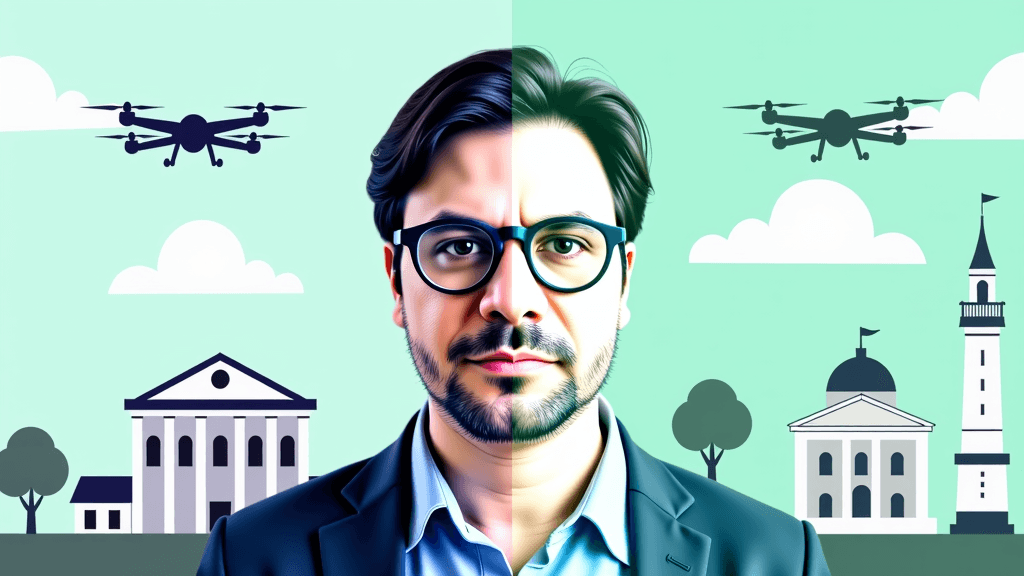Experts Warn Of US$ 400 Billion ‘AI Bubble’ As Transformative Benefits Materialize - Why This Paradox Defines Artificial Intelligence's Most Strategic Moment
October 4, 2025 | by Matos AI

A fascinating thing has happened in the last 24 hours: while experts warn of a possible AI bubble which could drag down the American economy, Jeff Bezos reinforces that the benefits will be huge when the dust settles. And meanwhile, Brazilian companies like Algar are already reaping practical results with more than 80 AI agents implemented.
This is not a simple paradox. It is a reflection of a historical moment where financial speculation and real transformation coexist - and understanding this dynamic can define how your company navigates the coming years.
The Mathematics of the “Bubble” That Isn't Really a Bubble
Let's look at the numbers: US$ 400 billion is what giants like Google, Meta, Microsoft and Amazon plan to invest in AI infrastructure by 2025 alone. To put that into perspective, it represents around 6% of the American economy - much less than the 70% of consumer spending, but enough to dynamically alter entire sectors.
Join my WhatsApp groups! Daily updates with the most relevant news in the AI world and a vibrant community!
- AI for Business: focused on business and strategy.
- AI Builders: with a more technical and hands-on approach.
Gregory Daco, chief economist at EY-Parthenon, notes something crucial: “investments in AI have boosted several economic statistics”, It's not just technology, but also energy, transportation and construction. The question is not whether there is over-investment, but whether expectations are calibrated with the reality of returns.
In my work with companies over the last few years, I've observed an interesting pattern: the organizations that manage to balance strategic investment with practical results are exactly those that thrive when the “bubbles” adjust.
The Brazilian Case: Algar and Pragmatic Implementation
While Silicon Valley debates bubbles, the Algar has structured a robust AI program which exemplifies what I call “intelligent pragmatism”. With more than 80 agents in place and a Center of Excellence that has grown from 5 to 20 specialists, the Brazilian company demonstrates an approach that should inspire the global market.
The difference? Not every problem needs generative AI. Algar favors pragmatic solutions - sometimes simple automations or predictive models work better than complex tools. It is this mentality that separates strategic implementation from technological fads.
Practical use cases include:
- Legal automation - reducing operational bottlenecks
- Support for sales forces - amplifying human productivity
- Predictive churn analysis - anticipating retention problems
- Customer service with generative AI - improving the experience without eliminating the human touch
The Bezos Vision: Beyond the Cycle of Expectations
Jeff Bezos brought a valuable perspective by comparing the current moment with the biotech bubble of 2000. His observation is accurate: “when the dust settles and the winning projects stand out, society will benefit from these technological advances”.
This is not the first time that we have experienced a cycle of inflated expectations followed by adjustment. What matters is positioning yourself to capture real value when the market matures. Bezos even reinforced his optimism by investing in Perplexity - which precisely launch your Comet browser for free, This signals a strategy of democratization even in times of caution.
The Real Challenges: When AI Disappoints
We can't ignore the friction points. Criticism of automated customer service shows that up to 30% of consumers abandon brands after negative experiences with AI. Cases such as chatbots that “made up false rules” or generated the wrong orders show that poor implementation creates more problems than solutions.
The question is not the technology, but the implementation strategy. As Algar demonstrates with its AImpulso program, success depends on:
- Adequate training - practical training and internal challenges
- Strict governance - security and privacy policies
- Careful approval - testing tools before large-scale adoption
- Cultural alignment - integrating technology with organizational purpose
Hollywood and the Future of Creative Work
One of the most revealing debates of the last 24 hours came from Hollywood. The SAG-AFTRA union has taken a stand against digital actress Tilly Norwood, He argues that creativity must remain human-centered.
This is not an irrational fear. It's a legitimate concern about how to preserve authenticity and professional livelihood in an increasingly automated world. At the same time, illustrators denounce improper use of AI in literary prizes, This highlights the need for clear regulations.
The solution lies not in total resistance, but in defining ethical boundaries and creating opportunities for collaboration between humans and AI.
The Goal and Responsible Personalization
Meta announced global ad personalization via interactions with its AI assistant, But with interesting protections: sensitive topics such as religion, health and politics will not be used for targeting, and WhatsApp conversations remain protected.
This represents an important coming of age: using AI to create value without compromising privacy or ethics. With over a billion active Meta AI users, we're seeing massive scale combined with responsibility - a model that other companies should study.
The Skills Gap in the Creative Industry
Montag School survey reveals that 86% of creative professionals consider themselves beginners in AI, despite the boom of the last three years. ChatGPT leads in popularity (87.7%), followed by Google Gemini, Midjourney and Adobe Firefly.
What's most interesting: there is a strong interest in improving the use of tools, especially in creating effective prompts and optimizing processes. This represents a huge opportunity for training and professional development.
Navigating Between Bubble and Benefits: Five Practical Strategies
How to balance investment in AI while avoiding speculative traps and capturing real value? Based on the news of the last 24 hours and my experience with thousands of companies, I suggest five approaches:
1. Adopt Algar's Pragmatism
Start with simple, testable use cases. Not every problem needs the most sophisticated AI - sometimes basic automation solves it better and cheaper.
2. Invest in Training Before Technology
The skills gap is real. Before buying more tools, make sure your team knows how to use the ones they already have.
3. Implement Governance from the Start
Clear usage, security and ethics policies prevent future problems and build trust with customers and stakeholders.
4. Monitor Customer Experience Religiously
If 30% of consumers abandon brands after bad experiences with AI, your monitoring system needs to be impeccable.
5. Think Collaboration, Not Substitution
The most successful companies use AI to amplify human capabilities, not eliminate them completely.
Brazil's Strategic Moment
While Silicon Valley navigates between euphoria and caution, Brazil has a unique opportunity. Cases like Algar's show that we can adopt AI intelligently, avoiding speculative excesses but capturing real benefits.
Our advantage? We have arrived at this stage with global examples of what-works and what-doesn't. We can be more selective, more pragmatic, more focused on sustainable results.
The “AI bubble” may exist in market valuations and inflated expectations, but the technological transformation is irreversible. The question is not whether there will be adjustments - there will be. The question is how your company positions itself to thrive regardless of market cycles.
As Bezos noted, “when the dust settles”, the benefits will be evident. Companies that start now, responsibly and strategically, will be best placed to capture these benefits.
In my mentoring and consulting work, I help executives and companies navigate exactly this transition - balancing opportunity and risk, implementing AI pragmatically and building sustainable competitive advantages. Because in the end, it's not about avoiding or blindly embracing technology, but using it with strategic intelligence.
✨Did you like it? You can sign up to receive 10K Digital's newsletters in your email, curated by me, with the best content about AI and business.
➡️ Join the 10K Community here
RELATED POSTS
View all



